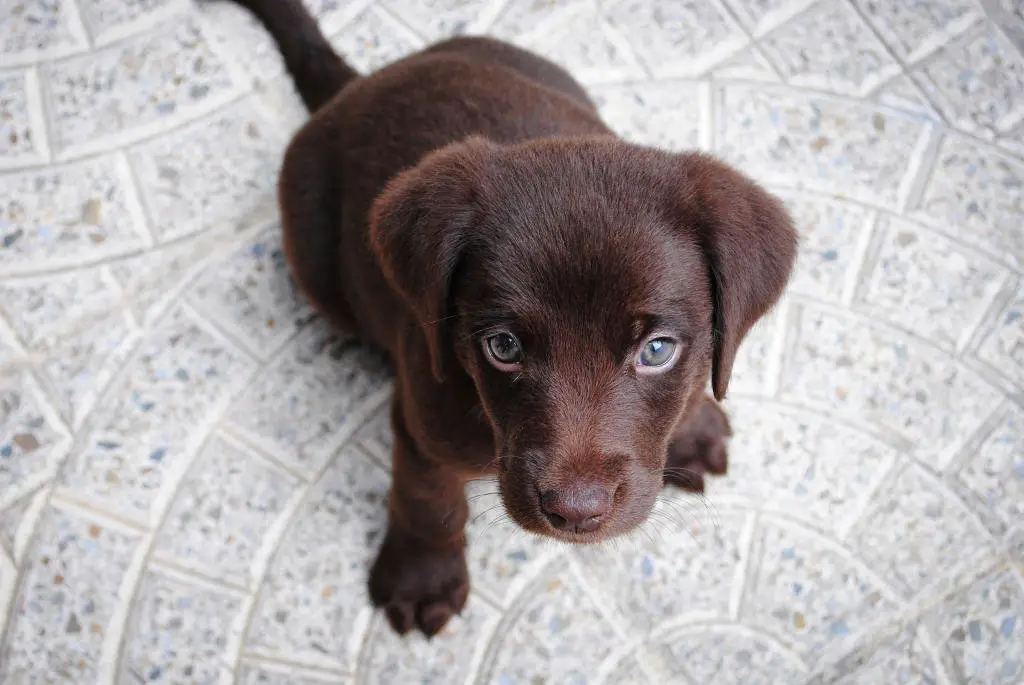When you are learning how to potty train a dog, you will need to become a bit organized. While the process takes patience and commitment, it also takes certain devices. There are many products designed for effective potty training as support tools.
Here are a few of the most common:
- Dog of appropriate size
- such as baby gates to seal off rooms in the house
- A set
- A play or
- to protect play area floor
- A litter tray for peeing or made for this purpose
- used for positive reinforcement
- A and plenty of little bags
- designed for pets
Crate of appropriate size
When considering how to potty train a puppy, think immediately of a . Confinement is the right-hand man of supervision in this regard. You need a correct place for elimination which is a cause for a reward. There is no question as to the use of the floor. Good behavior is the goal and a clearly-designated routine. A crate can be a big help in directing your pet and establishing boundaries. Above all, you want to be present to watch activity and control it. As bladder and bowel control improves, so will behavior. A crate prevents puppies from exploring for new pee spots. It also becomes a kind of sacred ground to be kept clean and pristine.
Pet Barriers
tell a pet where he or she can and cannot go. They protect the house from accidental soiling. It is important to provide restricts when undertaking potty training. They can always be expanded later as trust grows. Puppies are going to be attracted to smells of former elimination sights, and every effort must be made to divert them. Restrictions on roaming are required. Exercise and/or playpens work fine in this regard and are surrounded by pet barriers.
Collar and Leash
A direct method of potty training is to escort your pet to the right spot using a set. Then the animal will not wander off. This provides good control over every movement of the dog as he learns just where to defecate.
Play and Exercise Areas
You can assemble yourself from durable wire an enclosed . It, in essence, provides a restrictive area to help with potty training. In the home, it is ideal for short durations when you need to be vigilant about elimination. Also, when leaving for any period of time, you know they are safe from accidents. Thus, such areas need to be large enough for sleep and play and to contain necessary puppy pads. A central household location is a right spot, never an isolated distance away from the main family action. Just make sure the pet cannot get out and that the floor is properly protected.
Some pet owners opt for a heavy-duty exercise pen if they intend to use it for some time or the dog breed is on the large size. You can mix and match panels in prefab kits and create your desired shape. When finished, the pen folds up for later use. Lighter versions are fine in most cases when the puppies are small and young. Their advantage is a quick set up, tear down, and compact storage.
Plastic Tarpaulin
There is nothing as practical as a in any enclosed play or exercise pet area. It will protect the floor quite well. It completes the restricted area and keeps it clean. Plus, if there are mishaps, cleanup is easier. Your puppy can sleep and play in comfort while you have peace of mind. It is the final piece of the puzzle when it comes to playing in exercise pens. You can also put a paper on top for extra protection.
Puppy Pads and Litter
In these above-mentioned confined spaces, puppy pads or a litter tray are mandatory in bathroom spots. They can be placed right on the floor, tarp, or in holders. The latter help clean up since raised edges trap “spills” and keep them inside. are made exactly for their purpose; they are soft and absorbent and often scented. Don’t hesitate to point the way to these pads as you undergo the poddy training. If the dog must go inside the house, this is the best solution. They, along with the litter trays, will safeguard carpets and floors.
Poop Bags and Pooper Scooper
Clean up time eventually comes, so why not make it simple and easy. Inside the house, just as in the yard, you can wield a hygienic to direct feces into poop bags. You can, of course, roll up and throw out used puppy pads, but it is not always necessary each time they are employed. Accidents particularly require the handy pooper scooper tool. If there is only a bit of a mess, you can flush it down the toilet.
House Training Treats for Rewards
Reward time is a fun way to acknowledge proper puppy potty training behavior. When the dog does his business in just the right spot, it is time to draw out the . This goes for inside or outside the house as the case may be. Positive reinforcement will stick with your pet, especially if it is lavish and often in the training period. It is the classic approach to the problem. Food is tops on most dogs’ lists so keep treats on hand and never run out!
Cleaning Products
are godsends for in-home accidents and mishaps. They should be designed for urination and defecation matter and be able to tackle stains and odors alike. If you don’t get rid of the smell, the sniffing puppy will inevitably return. Plus, you don’t want to use ammonia-based products that in themselves smell like urine. It seems self-defeating to say the least.
Special cleaners are available that are known as enzymatic. In other words, they contain enzymes that break down the very proteins a puppy can detect. The best ones will entirely eradicate the lingering smell. The goal is to eliminate and not mask. Any product that has ingredients that resemble a urine odor are a no no.
If you know someone who might find this story helpful, don’t hesitate to share this post. And share your own stories or situations on how to potty train a dog topic in the comment section below.


